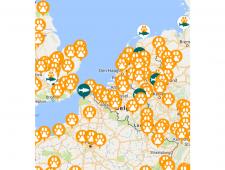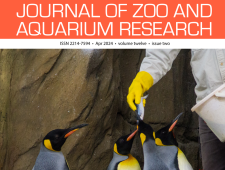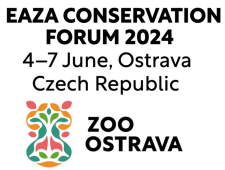Black-winged myna complex
(Acridotheres melanopterus, A. tricolor, A. tertius)
Coordinator: Anais Tritto
Institution: Mandai Wildlife Reserve
Programme roles
| • Ark The EEP population has the potential to act as an Ark for wild black winged myna. These birds are highly threatened due to illegal wildlife trafficking. However for this role to success there is active management needed and genetically and demographic sound population is required. • Population Restoration At the moment establishing an Ark population takes priority but perhaps in the future there is the scope to release birds back in semi – protected or natural areas within their historic ranges. This is also dependent if enough birds are available. • Research (genetic/taxonomy) As the origins of many of the birds are currently unknown it is important to conduct and support research on the taxonomy and genetics of the EEP population but also of birds that are to be released. • Conservation education Black winged myna were a priority species for the EAZA Silent Forest campaign and can be excellently used to teach visitors about illegal wildlife trafficking and trade in songbird species from South east Asia. |
|
| • In situ support (field research) Once birds have been released in situ support is needed to monitor birds in the wild by monitoring release methods. Ecological and reintroduction protocols already exist for other species that can be potentially used for black winged myna. |
|
Programme highlights
- The species is on the first position of the priority list – Tier 1 – of the IUCN Asian Songbird Trade Specialist Group. It means that future conservation interventions, research and funding should be prioritise to this species as it suffers greatly from the illegal cage-bird trade.
- To revert the high rate of extinction in its natural habitat, several release programs have been implemented, all with various success (from unsuccessful to partially successful). The main threat to the release population remains the intensive poaching and there is a need for a strong and intensive community awareness and engagement program with the local community in the vicinity of the release sites.
- The Black-winged Myna complex faced many taxonomic changes over the time. Acridotheres melanopterus was previously split into 3 subspecies, depending on their range and coloration:
1. Acridotheres melanopterus melanopterus: known as the Black-winged Myna and found in West Java and Madura Island (past records). The bird is showing white coloration on the shoulders, back, rump and flanks.
2. Acridotheres melanopterus tricolor: known as the Grey-backed Myna and found in East Java. The bird has dark grey shoulders, white rump and flanks, and grey back.
3. Acridotheres melanopterus tertius: known as the Grey-rumped Myna and found in Bali. The bird has dark grey shoulders, back, rump and flanks.
In 2016, the three subspecies were separated into 3 distinct species until 2020 when they were merged into one single species (Acridotheres melanopterus) showing different morphs following a cline from West Java to Bali with slow inclusion of grey coloration along the cline. Genetic study confirmed that the inclusion of color is due to the introgression of the Javan Myna genetic over the time. Genetic study can be found here.






